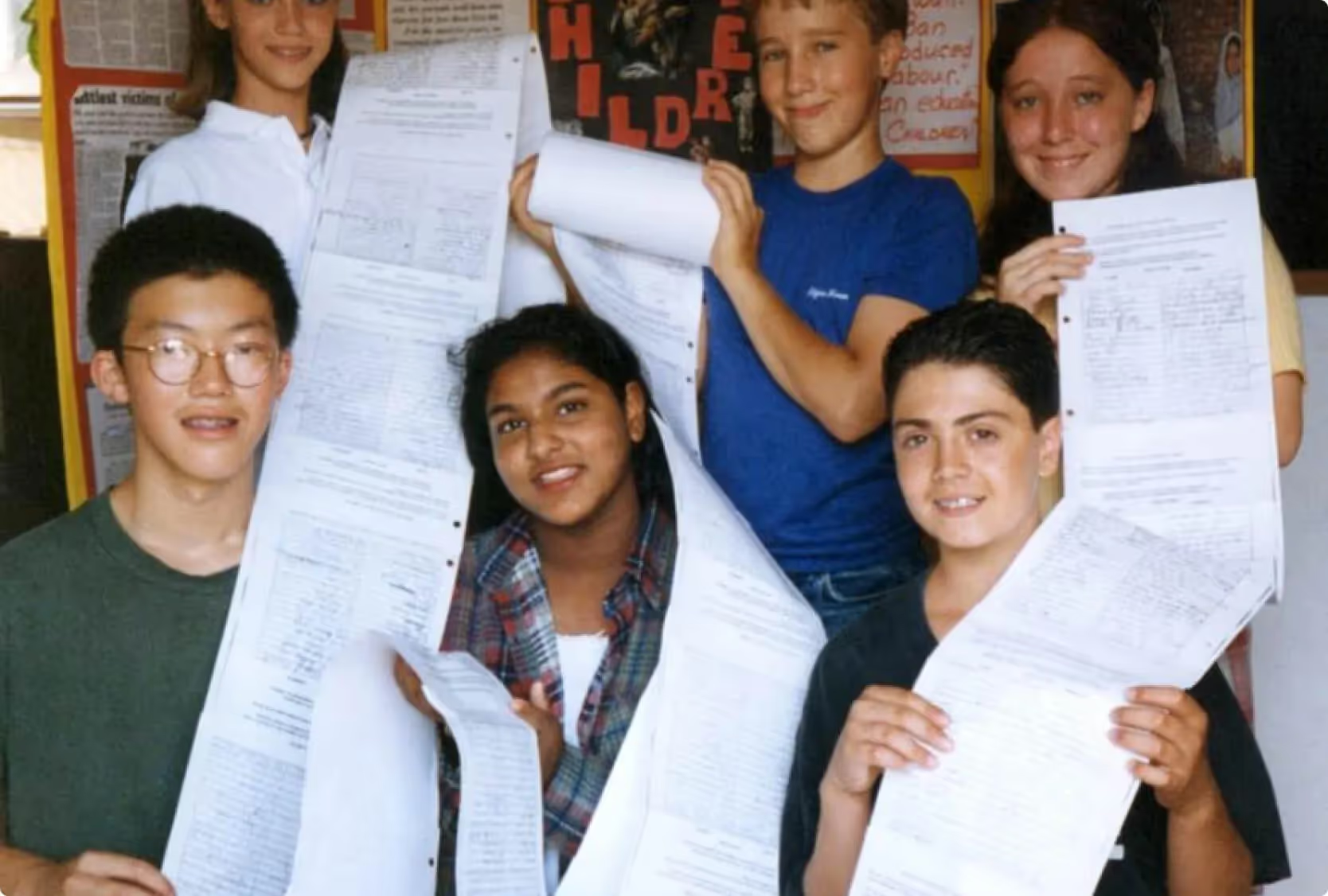

I took the first footsteps of my own legacy journey in the kitchen of my family home in Thornhill, Ontario, Canada, when I was 12 years old. I was eating breakfast and flipping through the comics section of the newspaper. As fate would have it, I noticed an article in the paper about a boy in Pakistan named Iqbal Masih.
The article told the story of a boy sold into factory labor at just 4 years old. He escaped six years later and became an activist against child labor. But tragically, Iqbal was assassinated after speaking out against the factory owners.
I quickly compared my comfortable life in suburban Toronto to Iqbal’s and knew right away that I wanted to shine a spotlight on the practice of child labor and ultimately put an end to it.

Together with a group of friends, we searched for ways to help from afar. One of our first initiatives was pulling together a 3,000-signature petition calling for the release of child labor activist Kailash Satyarthi, which was sent to the Prime Minister of India in a shoebox. Kailash was eventually released and later said that the “shoebox petition” was “one of the most powerful actions taken on my behalf.”

Following his release, Kailash invited me to India to see what the children my own age were experiencing with my own eyes. Soon after I began a seven-week trip through India, Pakistan, Nepal, Thailand and Bangladesh. In India, I had the incredible opportunity to see the child slave labor problem firsthand, accompanying Kailash as he kicked down doors and gave the gift of freedom to hundreds of laboring children.
Along the way, I met dozens of child laborers, as well as human rights organizations, who opened my eyes to the massive scope of the problem. I would later chronicle my journey in my first book, Free the Children, which I wrote to try and inspire other children to understand and use the power they have to create positive change, just as Iqbal’s story had motivated me.

I also had the great fortune to meet Mother Teresa at her mission house in Calcutta
During the trip, I met Canadian Prime Minister, Jean Chrétien, who was in the region on a trade mission. I urged Chrétien to commit to adding child labor to his trade talk agenda and to put pressure on North American companies to cease trading with businesses that utilized child labor. The encounter drew huge media attention back in Canada and helped shine a spotlight on the issue.

I also had the great fortune to meet Mother Teresa at her mission house in Calcutta, an encounter that had a great impact on me. While Iqbal showed me the impact young people can make, Mother Teresa, who took a vow of poverty and was a slight, older woman living in harsh conditions, showed me the incredible impact of dedicating a lifetime to service.
The trip, which was documented in the film “It Takes a Child”, drew media attention around the world. I was featured in a segment on 60 Minutes, interviewed by legendary journalist Ed Bradley and profiled in The Washington Post.
But, the trip was only the beginning of the movement. Back at home, thousands of kids in Canada and the United States heard about the fight to free children from child labor abroad and wanted to be part of the solution. Soon after, the Free The Children charity was born, with a mission to free children and their families from poverty and exploitation.
Almost two decades later, 60 Minutes revisited the trip and highlighted the work we’d done since to improve the lives of children in the developing world, and the new movement among youth in North America to be advocates for positive change.
In 2019, CNN’s “My Freedom Day” initiative aired a piece on Free The Children’s work, focusing on the amazing action being taken by young people to fight child labor.